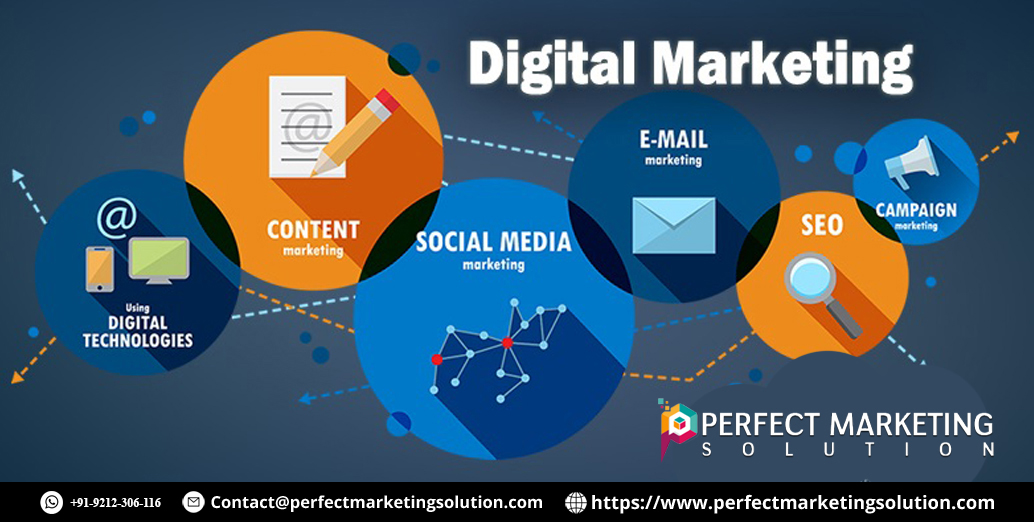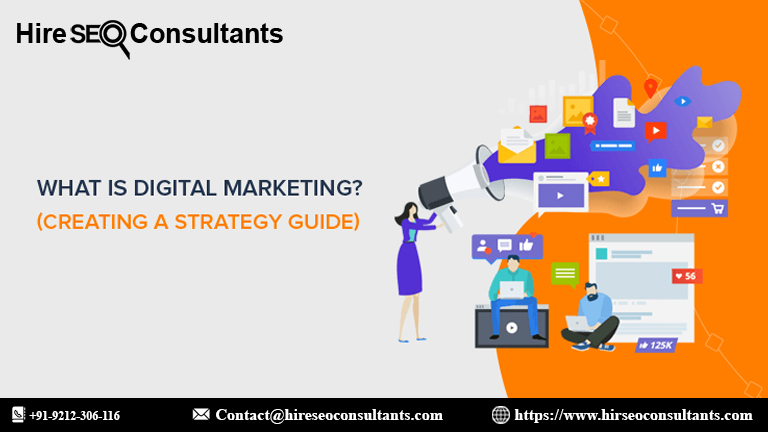How to Leverage Chatbots in Marketing – A Straightforward Guide for 2025
Discover how to use chatbots in marketing for 2025. Boost engagement, enhance customer experience, and drive sales with AI-driven solutions.

The world of digital marketing is constantly evolving, and with the rise of AI technologies, chatbots are becoming an essential tool for businesses looking to connect with customers in real time. As we approach 2025, chatbots are proving to be more than just a trend—they're becoming a vital part of marketing strategies.
This article explores how businesses can effectively use chatbots in marketing campaigns to drive engagement, improve customer service, and boost sales.
What Are Chatbots?
Chatbots are AI-powered tools that simulate human conversations with users. They can interact with customers on websites, social media platforms, or within apps, providing automated responses to questions, taking orders, offering product recommendations, and more. Their ability to handle various tasks makes them a valuable resource in many aspects of digital marketing. If you're looking to implement chatbots effectively in your strategy, it may be worth considering hiring a top chatbot marketing agency to ensure optimal performance and seamless integration with your overall marketing goals.
Why Chatbots Matter in Marketing
-
Instant Customer Support
Chatbots provide immediate responses to customer inquiries. This reduces wait times and ensures that potential customers are not left frustrated, which can result in lost opportunities. As businesses move toward 24/7 customer service, chatbots play a critical role in addressing inquiries outside regular working hours. -
Cost-Effective Solution
Traditional customer service can be costly, with staff required to handle a large volume of queries. Chatbots can handle multiple interactions at once without additional cost, allowing businesses to reallocate resources more effectively. -
Improved Customer Engagement
Chatbots offer businesses the ability to keep customers engaged through personalized, dynamic conversations. By providing relevant content, answering questions, and offering assistance, chatbots can foster stronger relationships between businesses and their audiences. -
Data Collection and Insights
Chatbots track and store valuable data on customer behaviour and preferences. This data can be analyzed to gain insights into customer needs and preferences, helping marketers refine their strategies and offer more targeted campaigns.
How to Implement Chatbots in Marketing
To get started with chatbots in marketing, businesses need to follow a series of steps to ensure they are set up for success. The process is not as complex as it may seem, and with a clear plan, you can easily incorporate them into your marketing strategy.
1. Define Your Goals
Before implementing a chatbot, it is crucial to understand what you want to achieve. Some common goals for chatbots in marketing include:
- Lead Generation: Capture leads by engaging visitors and collecting contact information.
- Customer Support: Answer FAQs and solve basic problems to improve the customer experience.
- Sales Assistance: Help users browse products, make purchases, and offer discounts or promotions.
- Event Promotion: Promote upcoming events, product launches, or sales by sending timely reminders.
Having specific goals will help you configure your chatbot to meet the needs of your business and customers effectively.
2. Choose the Right Type of Chatbot
There are different types of chatbots available for businesses, and the right one depends on your goals and the complexity of the tasks you want it to perform. Common types include:
- Rule-Based Chatbots: These operate based on pre-programmed scripts and responses. They work well for answering frequently asked questions (FAQs) and providing basic support.
- AI-Powered Chatbots: These bots use machine learning to understand natural language and provide more intelligent responses. AI chatbots are better at handling more complex queries and engaging in dynamic conversations.
- Hybrid Chatbots: These combine both rule-based and AI-powered features. They provide basic answers through scripted responses but can also engage in more complex conversations when needed.
If your goal is simple customer service, a rule-based chatbot might suffice. However, if you're looking to engage in more complex conversations, an AI-powered chatbot is a better choice.
3. Develop a Script or Conversation Flow
One of the most important aspects of a chatbot is the conversation flow. Whether you're using a rule-based or AI chatbot, creating a clear and logical flow of conversation will ensure that the bot responds to customers in a way that makes sense.
For rule-based chatbots, start by identifying the most common questions or actions customers might take and then create a list of responses. For AI-powered bots, you'll need to train them with examples of real customer inquiries to help the bot better understand natural language and context.
For example, if your chatbot is designed to assist with product purchases, it might ask:
- "What kind of products are you interested in?"
- "Would you like me to recommend something based on your preferences?"
- "Do you need help with the checkout process?"
By developing a structured and user-friendly flow, you make the chatbot’s interactions feel more natural.
4. Integrate Your Chatbot with Other Marketing Channels
To make the most out of your chatbot, integrate it with other digital marketing tools and channels. Chatbots can be connected to email campaigns, social media, and even your CRM system. This integration enables chatbots to:
- Send follow-up messages: After a customer makes an inquiry or buys a product, the chatbot can send confirmation emails or additional information.
- Personalize interactions: Chatbots can pull data from your CRM to offer tailored product recommendations or discounts.
- Collect customer feedback: After a conversation, the chatbot can ask for feedback, helping businesses improve their products and services.
By linking the chatbot to multiple touchpoints, you ensure it functions as part of a broader marketing ecosystem.
5. Test and Optimize Your Chatbot
Once you’ve set up your chatbot, testing is essential. Start by running a series of tests to ensure the chatbot works correctly and provides helpful responses. Ask colleagues or a select group of users to interact with the bot and identify any issues.
Testing is an ongoing process. Over time, you should collect feedback from users to identify areas for improvement. Regularly updating your chatbot’s responses, optimizing the conversation flow, and adding new capabilities can ensure it remains useful and relevant to customers.
Key Areas Chatbots Can Improve in Marketing
Below are a few specific areas where chatbots can significantly contribute to marketing efforts.
1. Customer Support
- Instant Assistance: Chatbots can provide answers to common questions instantly, reducing customer wait times and improving satisfaction.
- 24/7 Availability: Customers from different time zones can get support at any time, which is especially valuable for global businesses.
- Handling Volume: Chatbots can manage a high volume of inquiries simultaneously, ensuring no customer is left waiting.
2. Lead Generation
- Capturing Information: Chatbots can engage visitors and prompt them to provide contact details, which can then be used for follow-up marketing efforts.
- Qualification of Leads: Chatbots can ask questions to determine whether a lead is worth pursuing, saving time for the sales team.
3. Product Recommendations
- Personalized Suggestions: Chatbots can ask users about their preferences or recent searches and offer relevant product recommendations.
- Cross-selling and Upselling: By analyzing past purchase behaviour, chatbots can suggest additional items that the customer might like, increasing the average transaction value.
4. Social Media Interaction
- Automated Responses: Chatbots can be set up to respond to comments or direct messages on social media platforms like Facebook, Instagram, or Twitter, making it easier for customers to get the information they need.
- Engagement Campaigns: Chatbots can initiate conversations with followers, create polls, and engage users with content like promotions or discounts.
Measuring the Effectiveness of Your Chatbot
To ensure your chatbot is helping with your marketing goals, monitor key performance indicators (KPIs), such as:
- Customer Satisfaction: Track how often customers report being satisfied with their chatbot interactions.
- Response Time: Measure how quickly the chatbot responds to inquiries and how this affects customer satisfaction.
- Lead Conversion Rate: Determine how many interactions lead to a sale or further engagement with your business.
- Cost Savings: Compare the cost of using a chatbot for customer service versus employing human agents.
By tracking these metrics, you can assess the performance of your chatbot and make necessary adjustments to improve its effectiveness.
Conclusion
As we look to 2025, chatbots will continue to play a major role in digital marketing, offering businesses the ability to improve customer service, drive sales, and gather valuable data. By setting clear goals, choosing the right type of chatbot, and continuously optimizing its performance, businesses can take full advantage of this technology. Whether you are focusing on lead generation, customer support, or product recommendations, chatbots provide an efficient and scalable way to reach your marketing objectives.
What's Your Reaction?
















